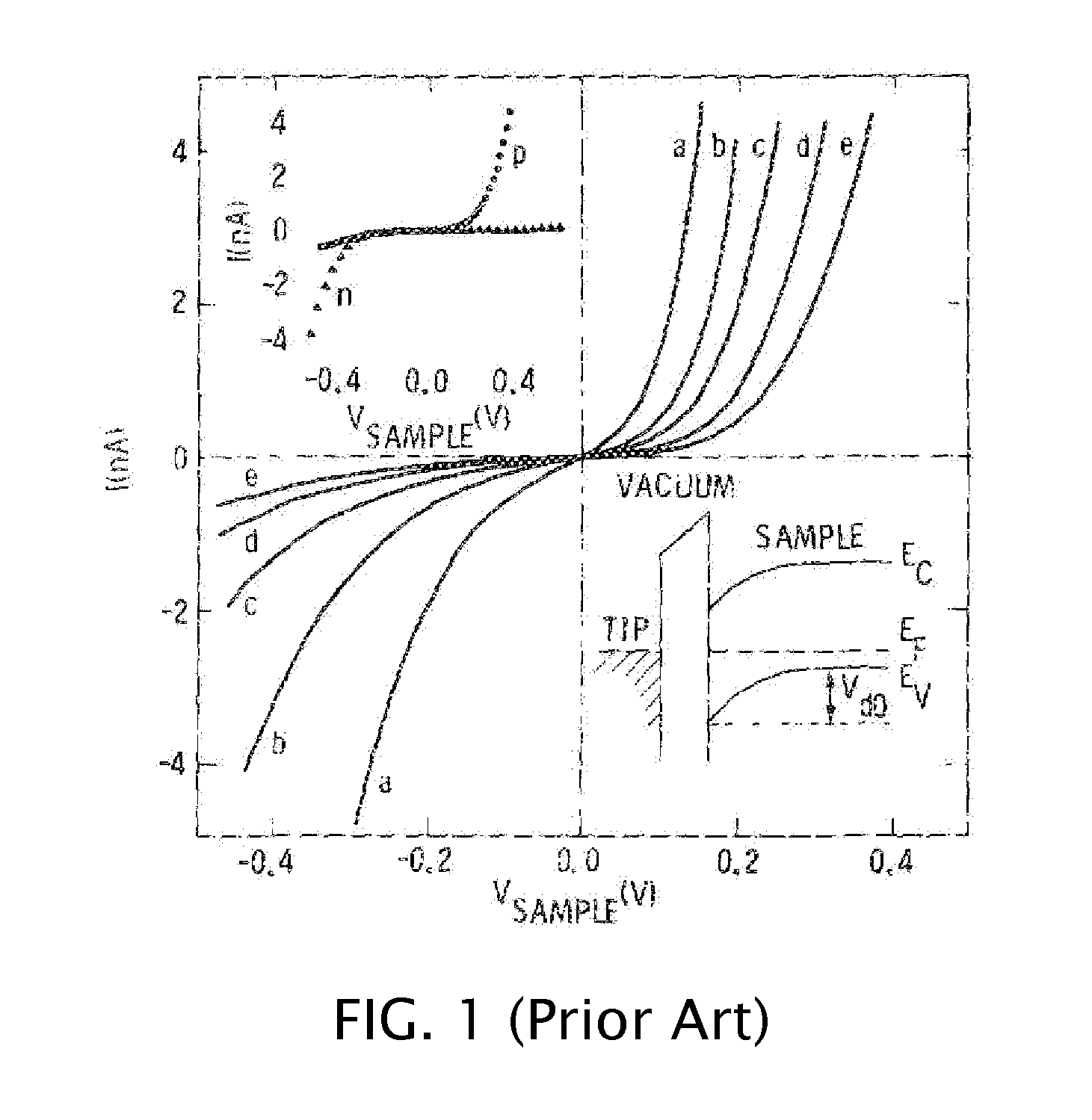Scanning Frequency Comb Microscopy (SFCM) For Carrier Profiling in Semiconductors
a carrier profiling and scanning frequency comb technology, applied in the field of semiconductors, can solve the problems of insufficient measurement average dopant atom concentration for metrology, ssrm is a destructive process, and it is unlikely that much finer resolution can be obtained, so as to achieve non-destructive and refined information for the user
- Summary
- Abstract
- Description
- Claims
- Application Information
AI Technical Summary
Benefits of technology
Problems solved by technology
Method used
Image
Examples
Embodiment Construction
[0056]With reference now to the drawings, the preferred embodiment of the method of scanning frequency comb microscopy is herein described. It should be noted that the articles “a”, “an”, and “the”, as used in this specification, include plural referents unless the content clearly dictates otherwise.
[0057]As can be seen in FIG. 6, in one embodiment, an apparatus set-up 10 is a scanning tunneling microscope 20 positioned over a sample 30 onto which a mode-locked laser 40 is focused so that the laser emits a beam onto the tunneling junction between the STM 20 and the sample 30. The semiconductor sample 30 is forward biased 70, as is shown in FIG. 6 where a p-type semiconductor 30 is used and the voltage on the STM tip 25 is set to make the tip negative, thus allowing the carriers in the semiconductor sample to remain in the region directly beneath the tip. A spectrum analyzer 50 is connected into the circuit by means of a microwave probe 60 making contact with the sample 30 in close p...
PUM
 Login to View More
Login to View More Abstract
Description
Claims
Application Information
 Login to View More
Login to View More - R&D
- Intellectual Property
- Life Sciences
- Materials
- Tech Scout
- Unparalleled Data Quality
- Higher Quality Content
- 60% Fewer Hallucinations
Browse by: Latest US Patents, China's latest patents, Technical Efficacy Thesaurus, Application Domain, Technology Topic, Popular Technical Reports.
© 2025 PatSnap. All rights reserved.Legal|Privacy policy|Modern Slavery Act Transparency Statement|Sitemap|About US| Contact US: help@patsnap.com



